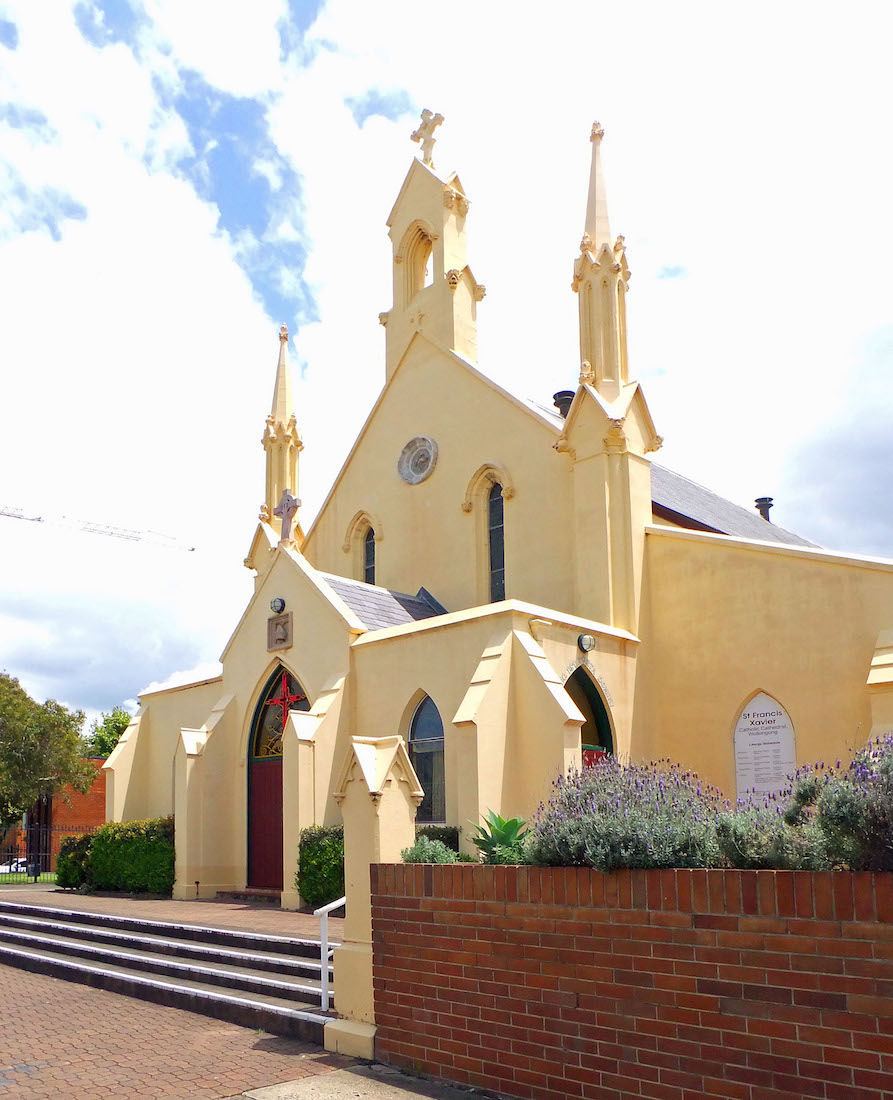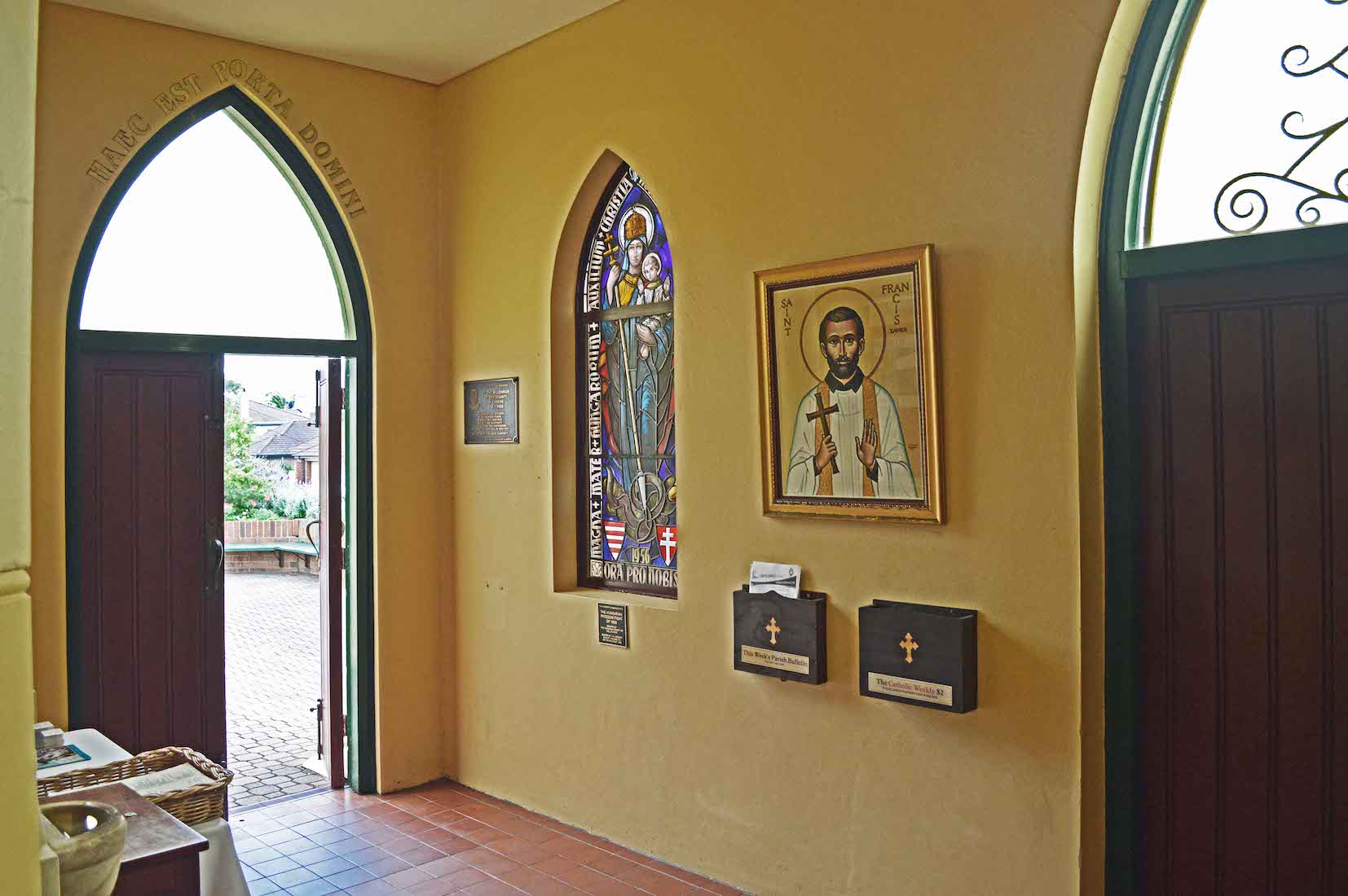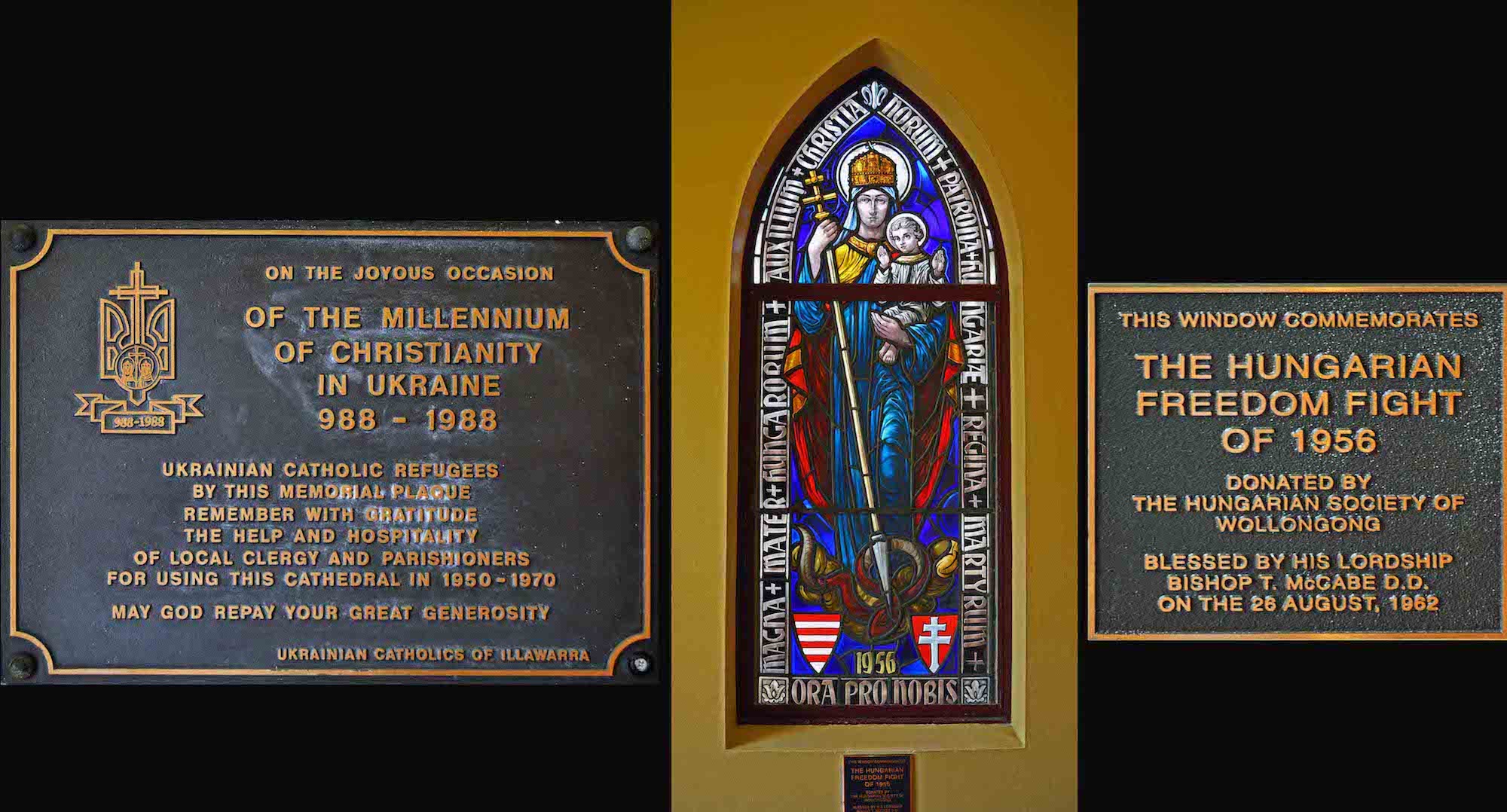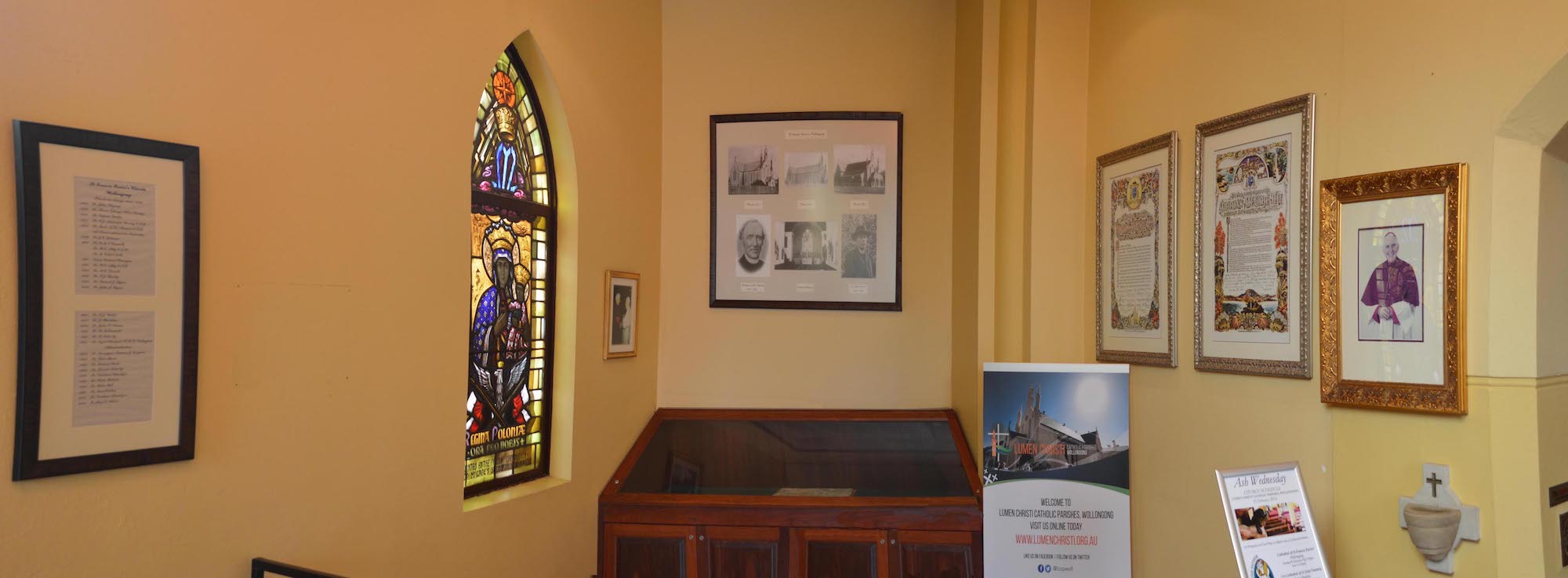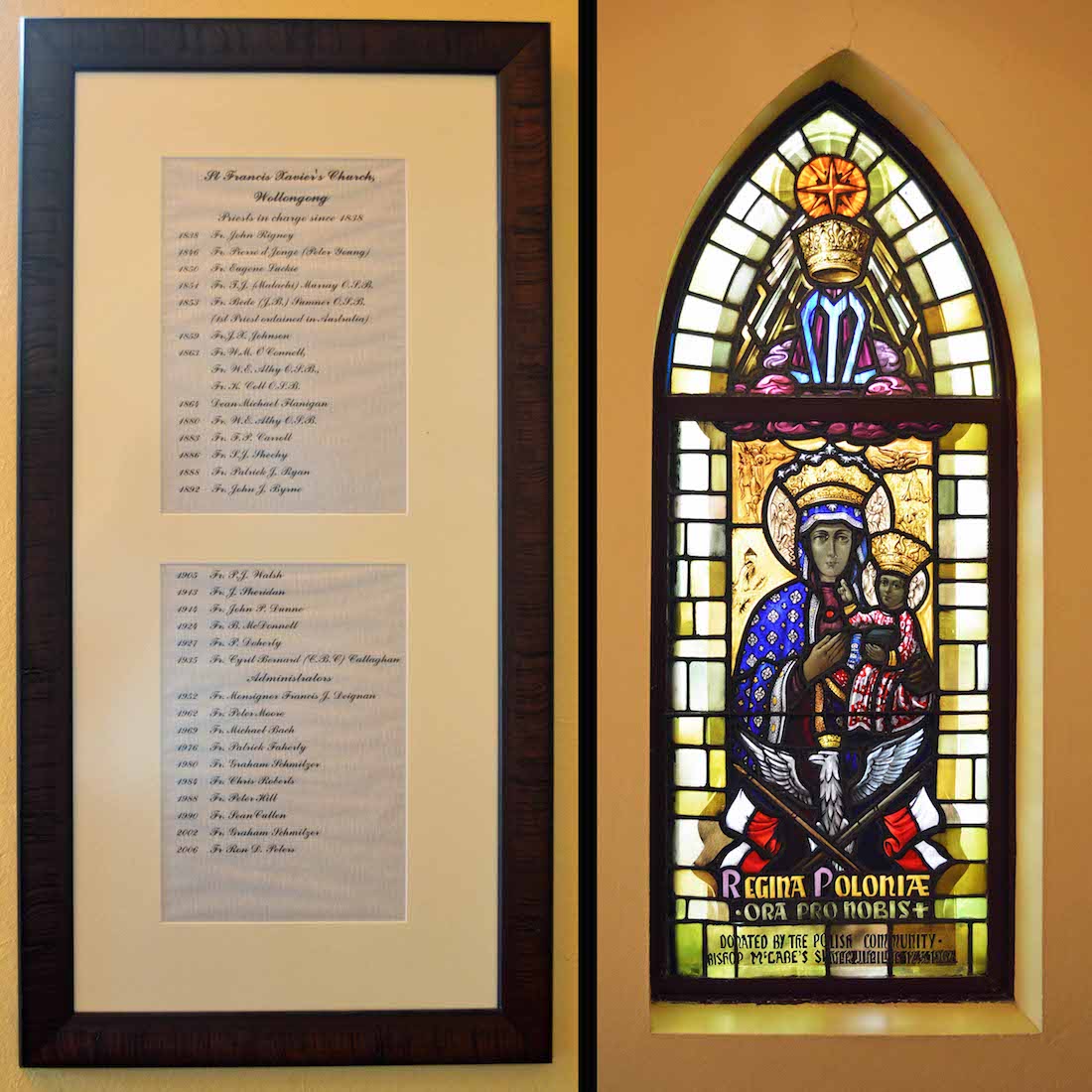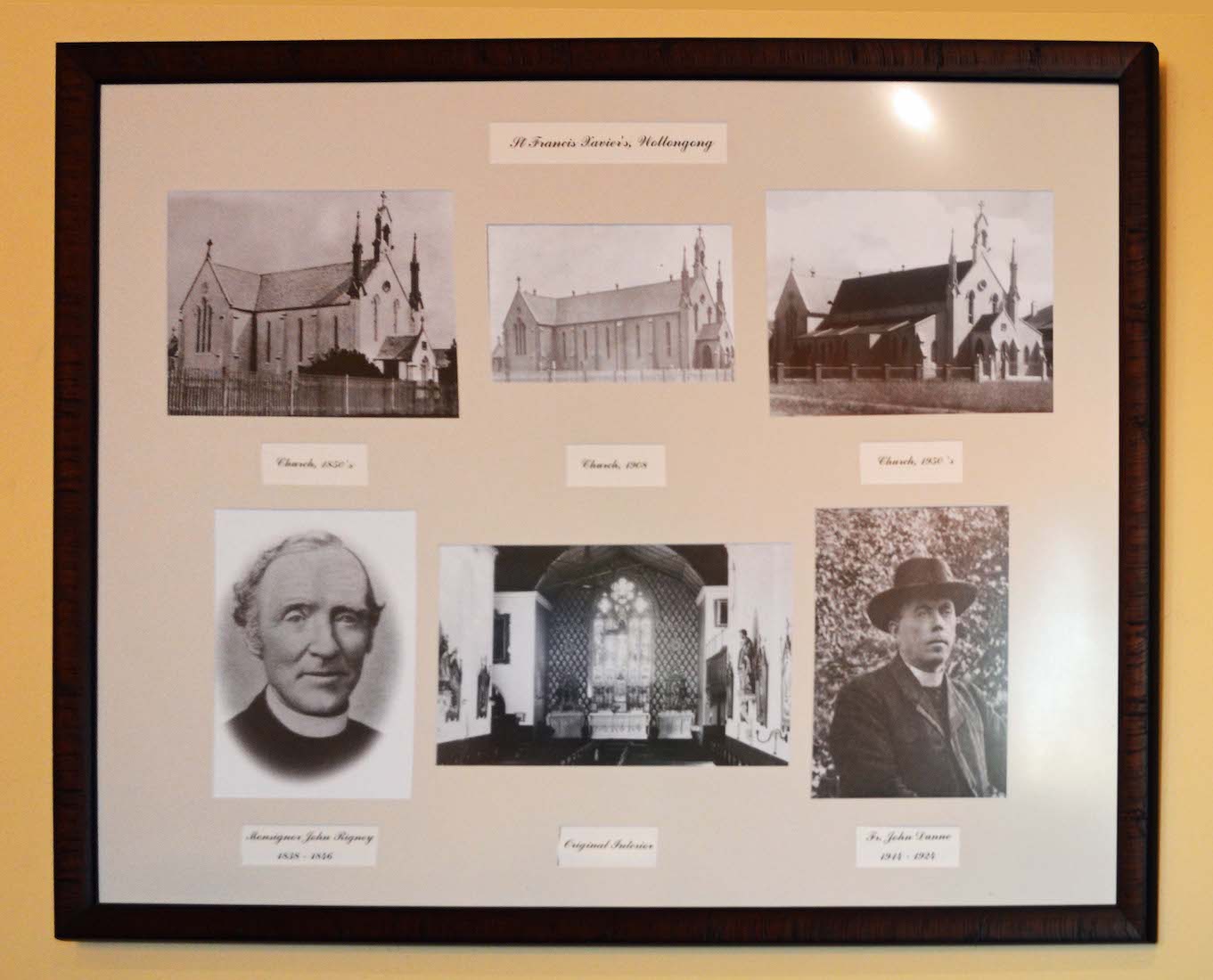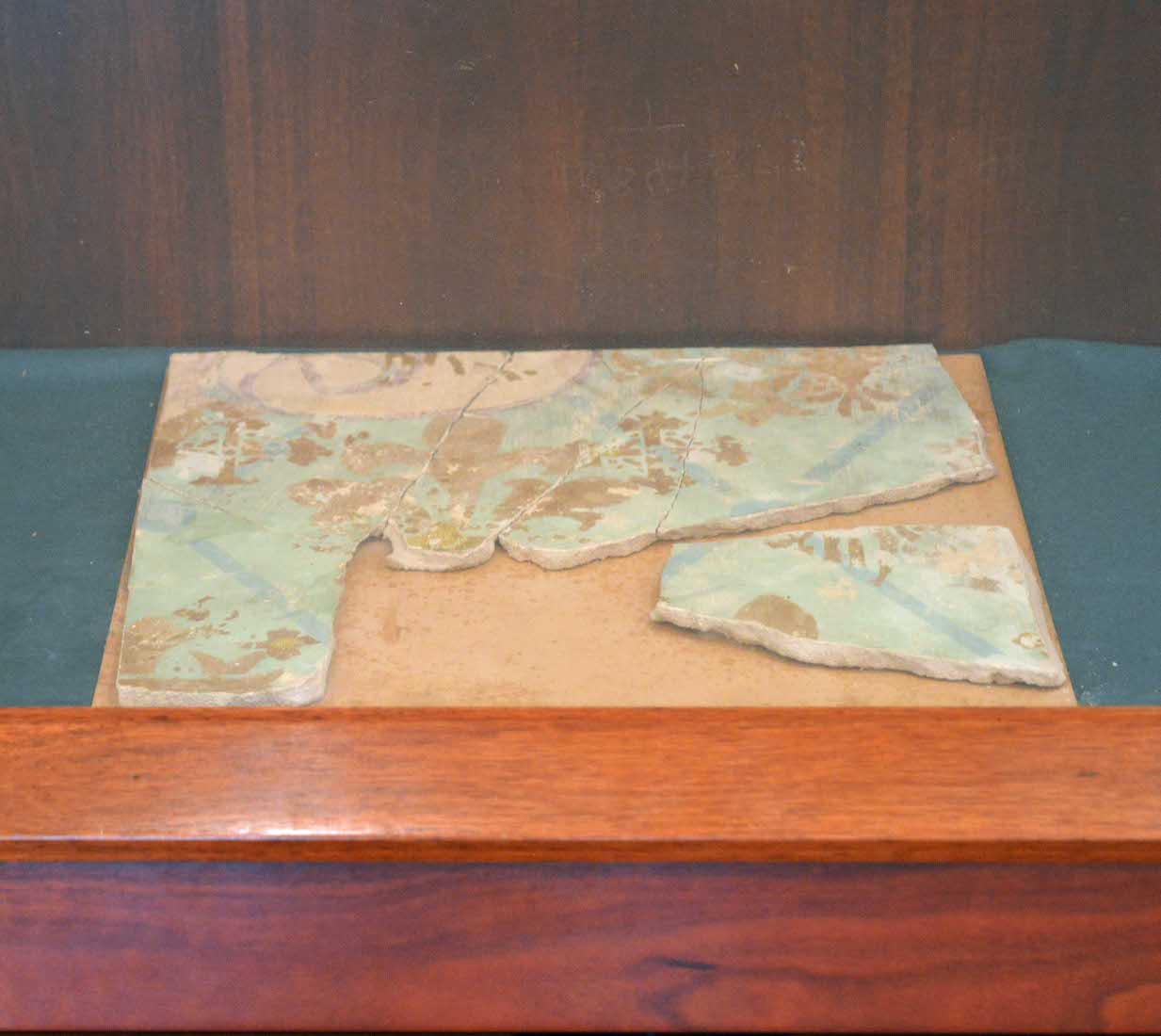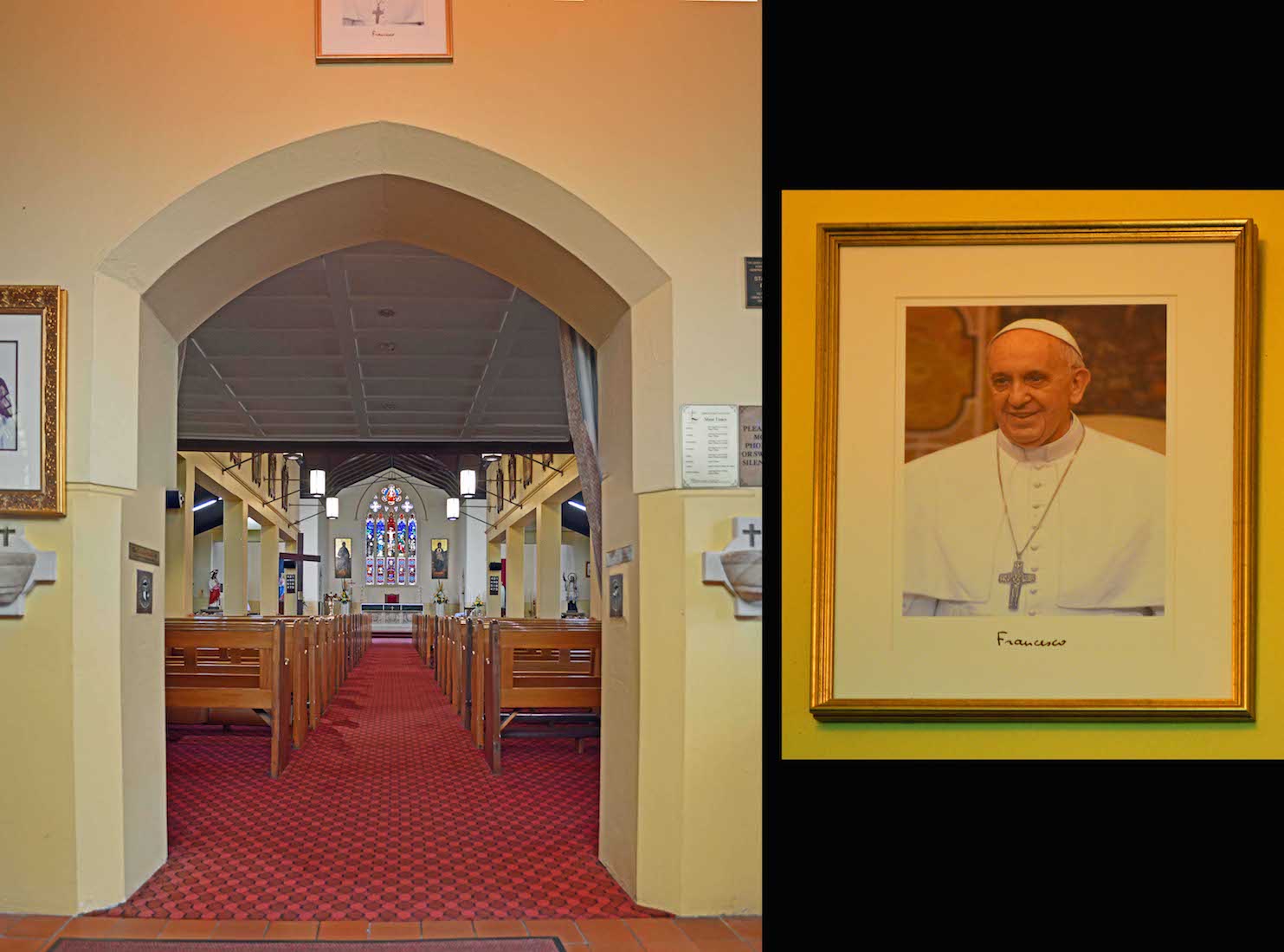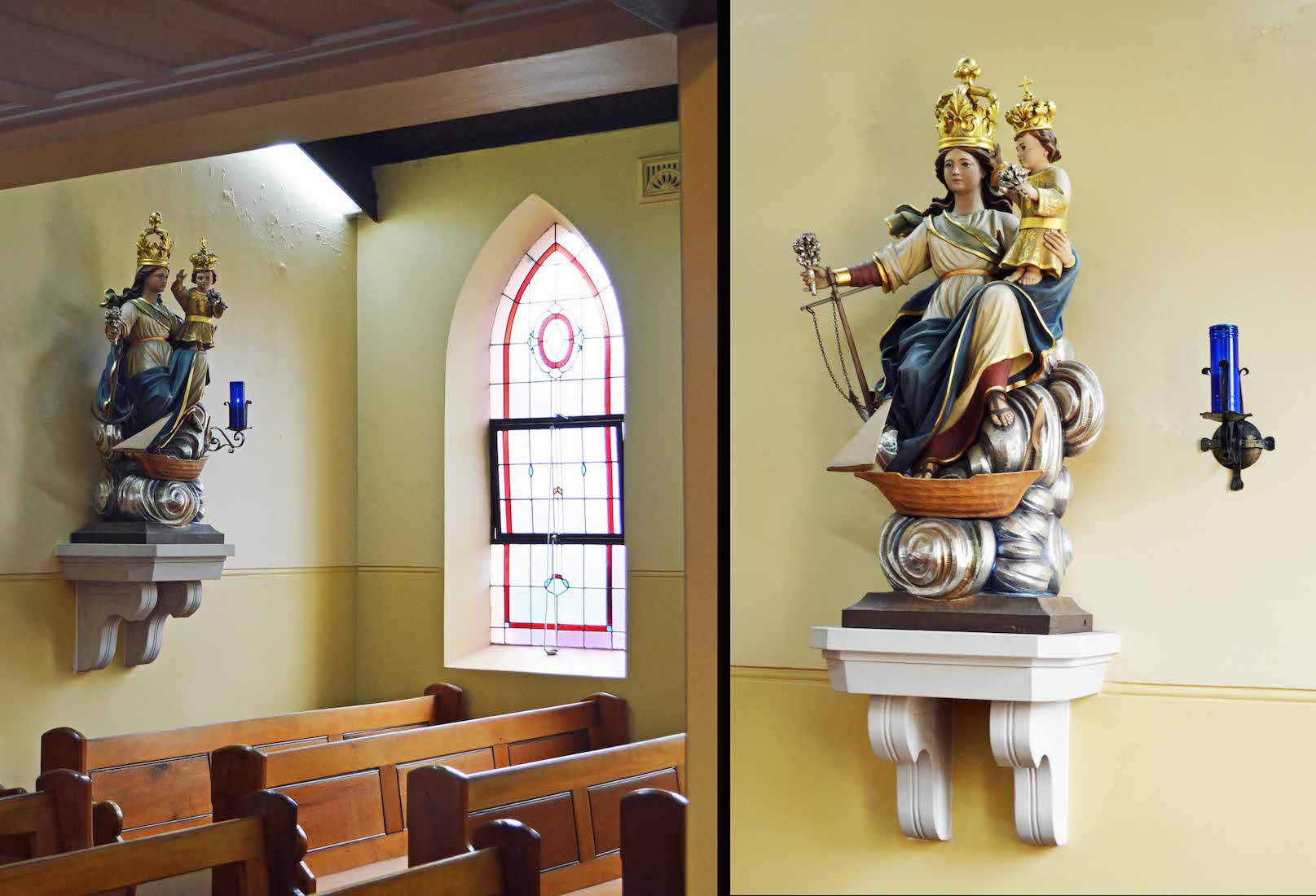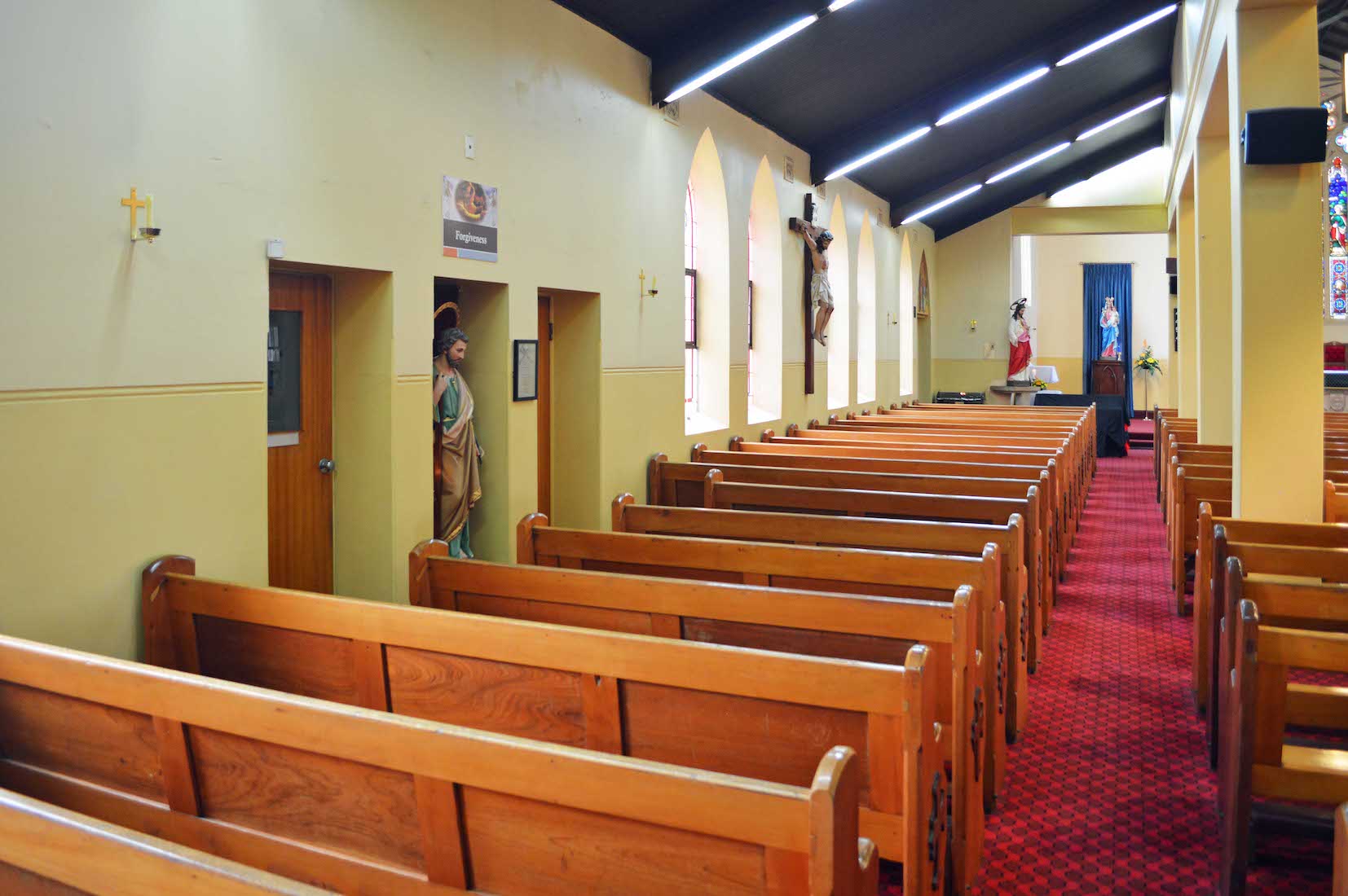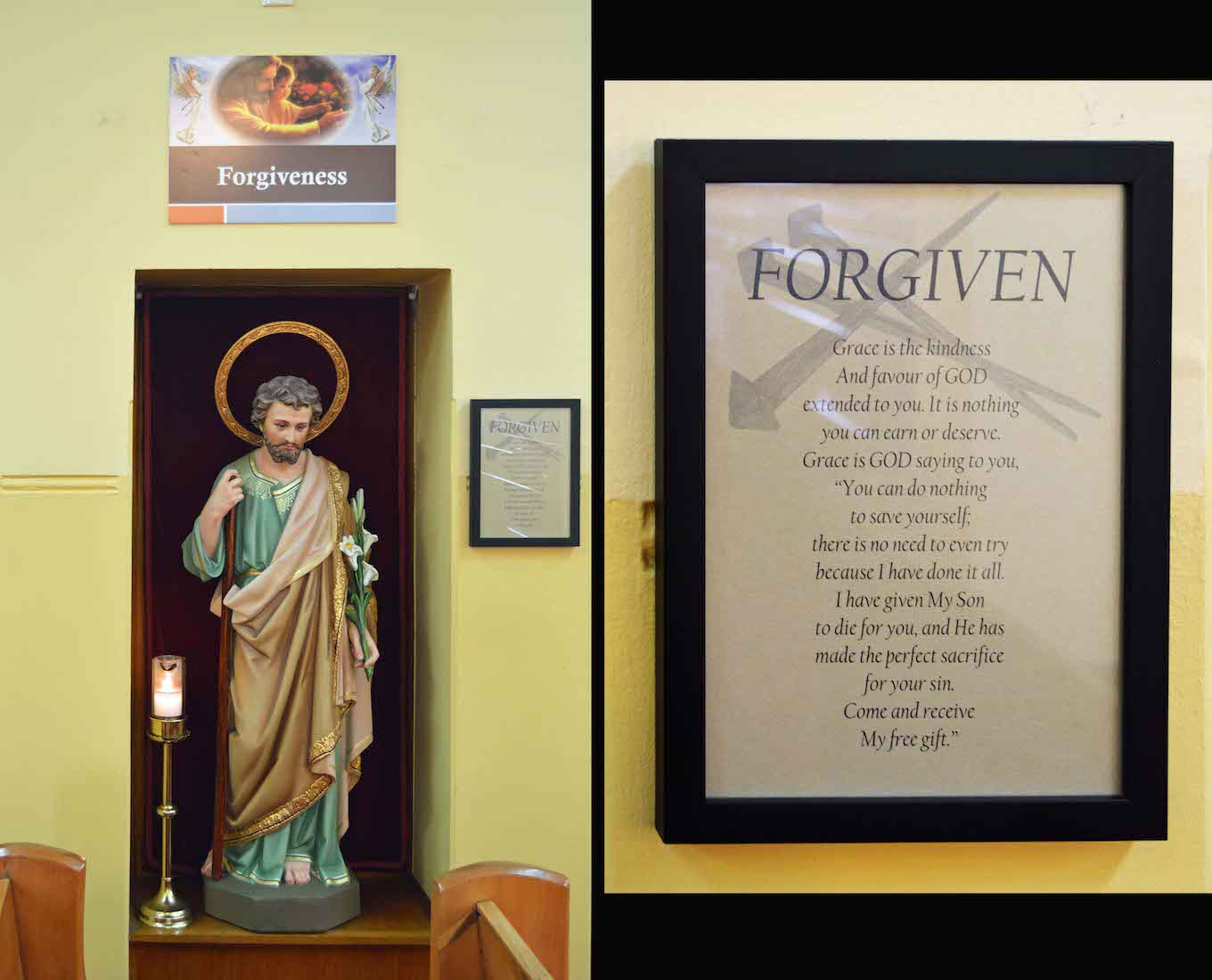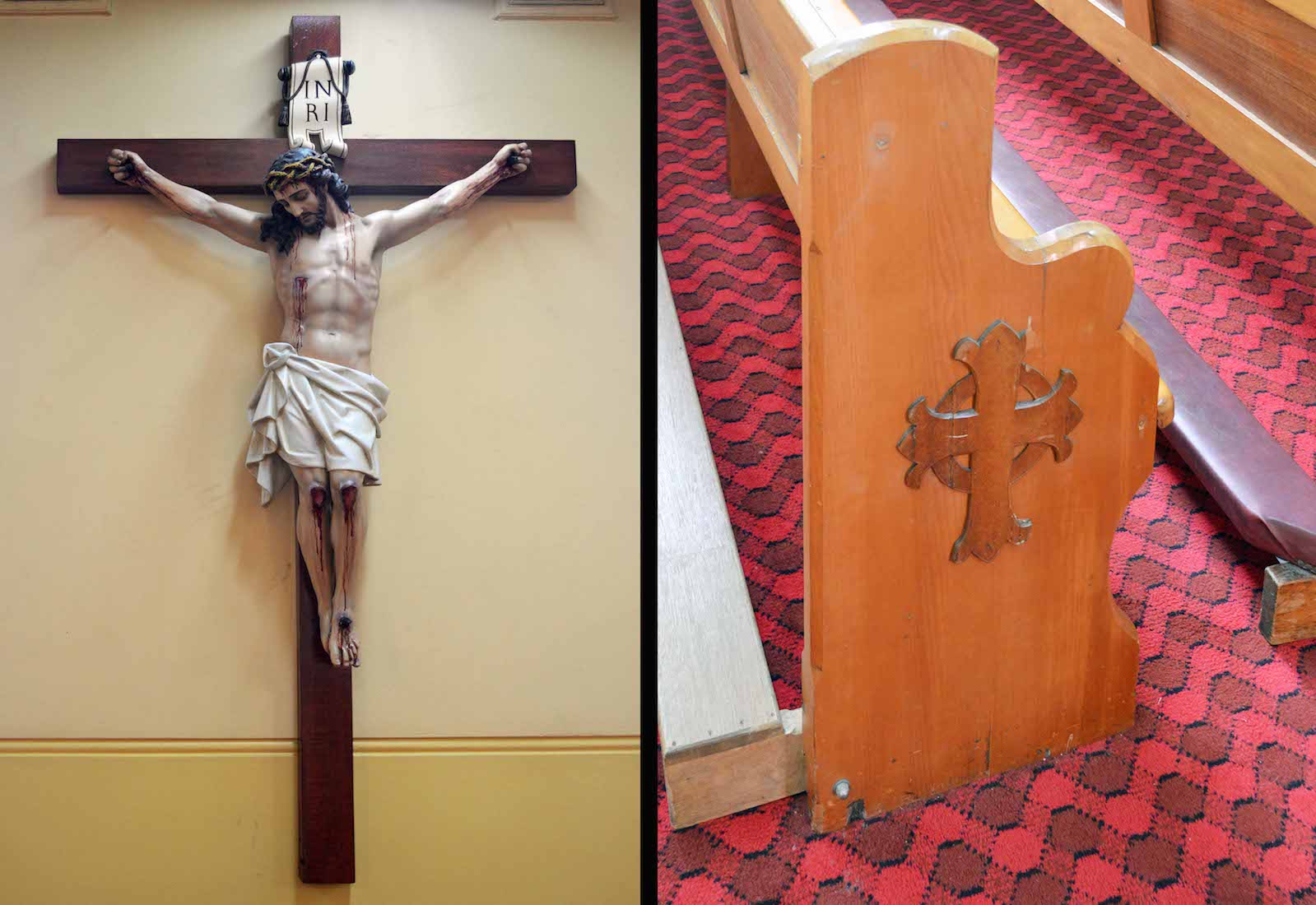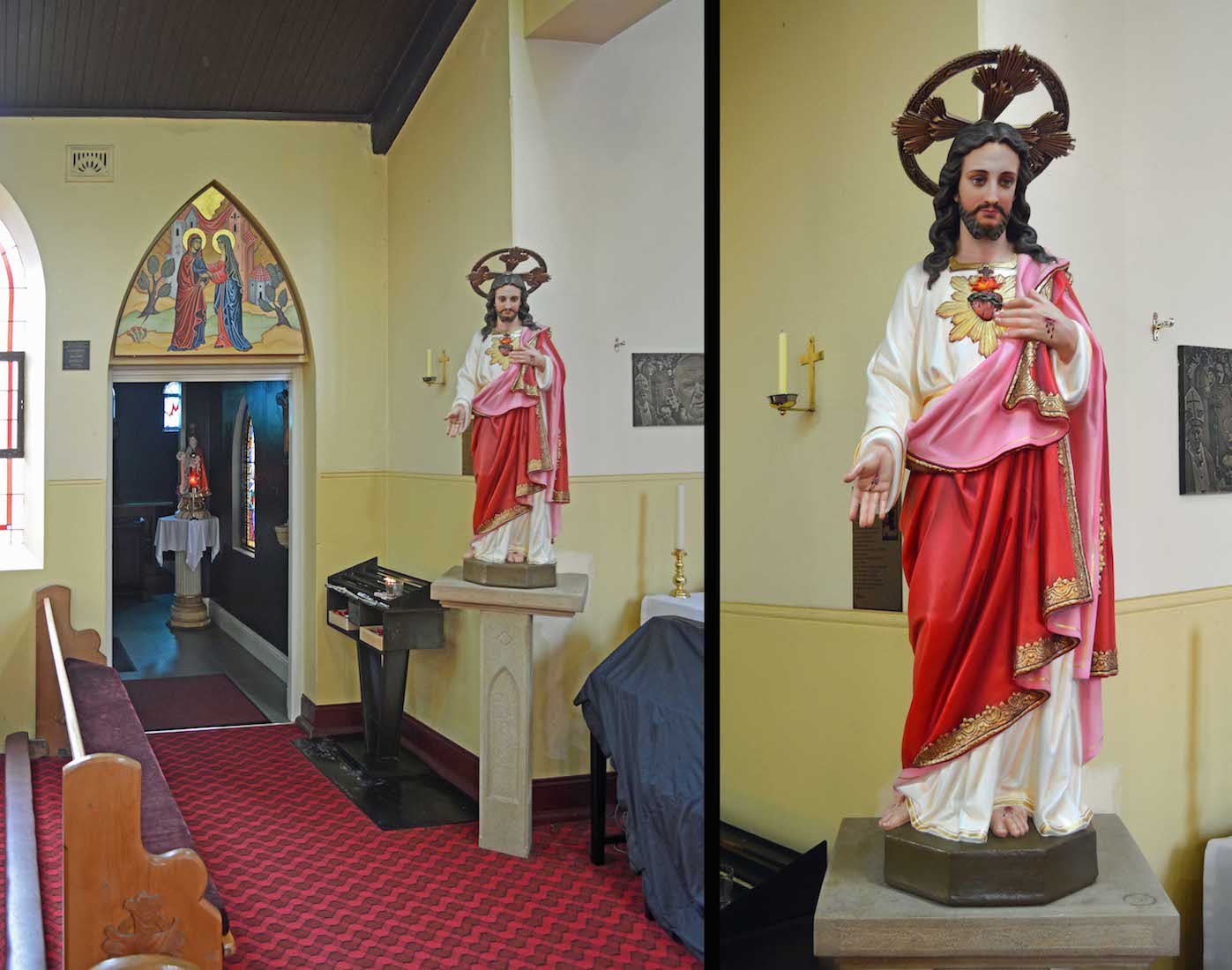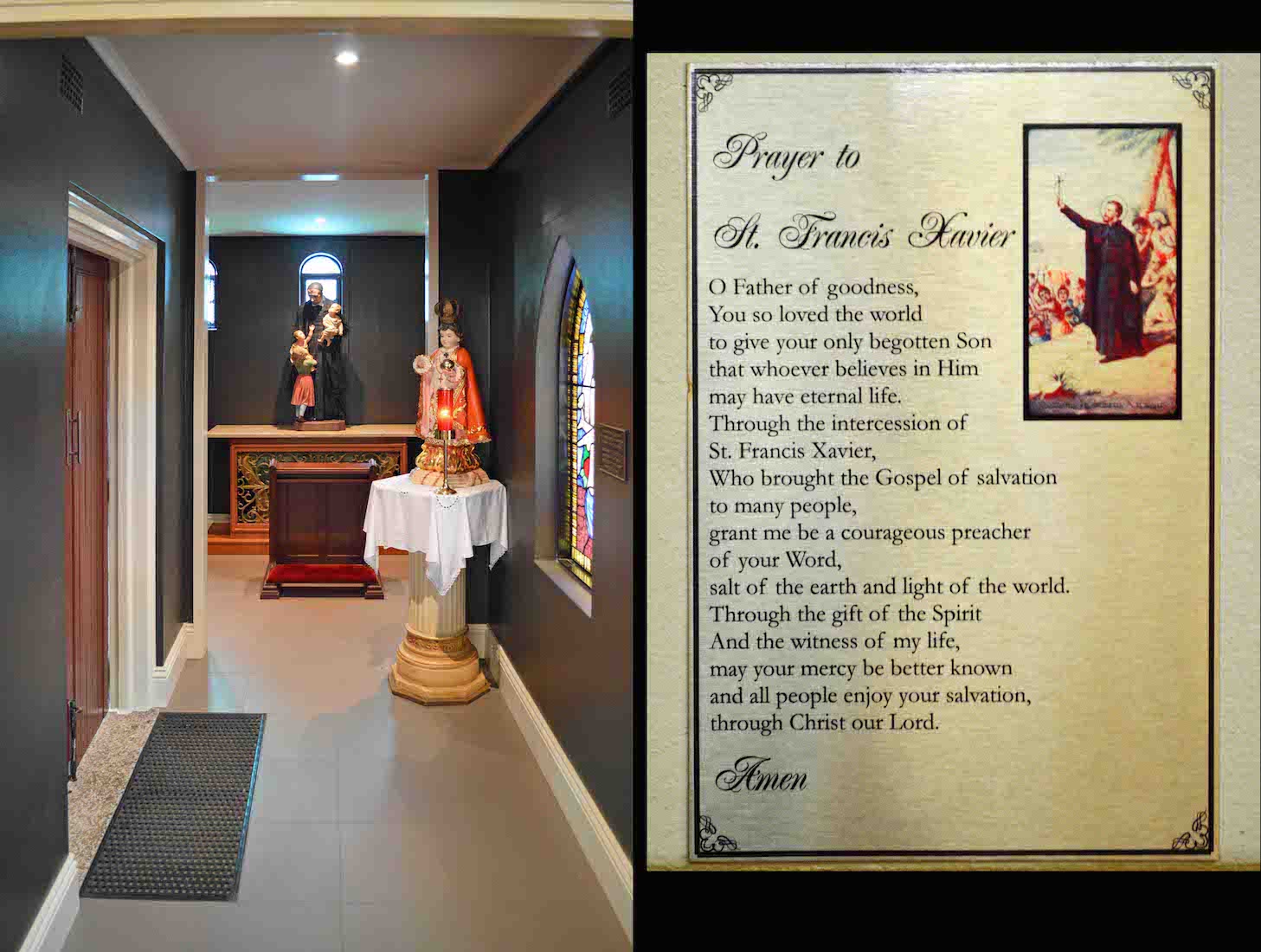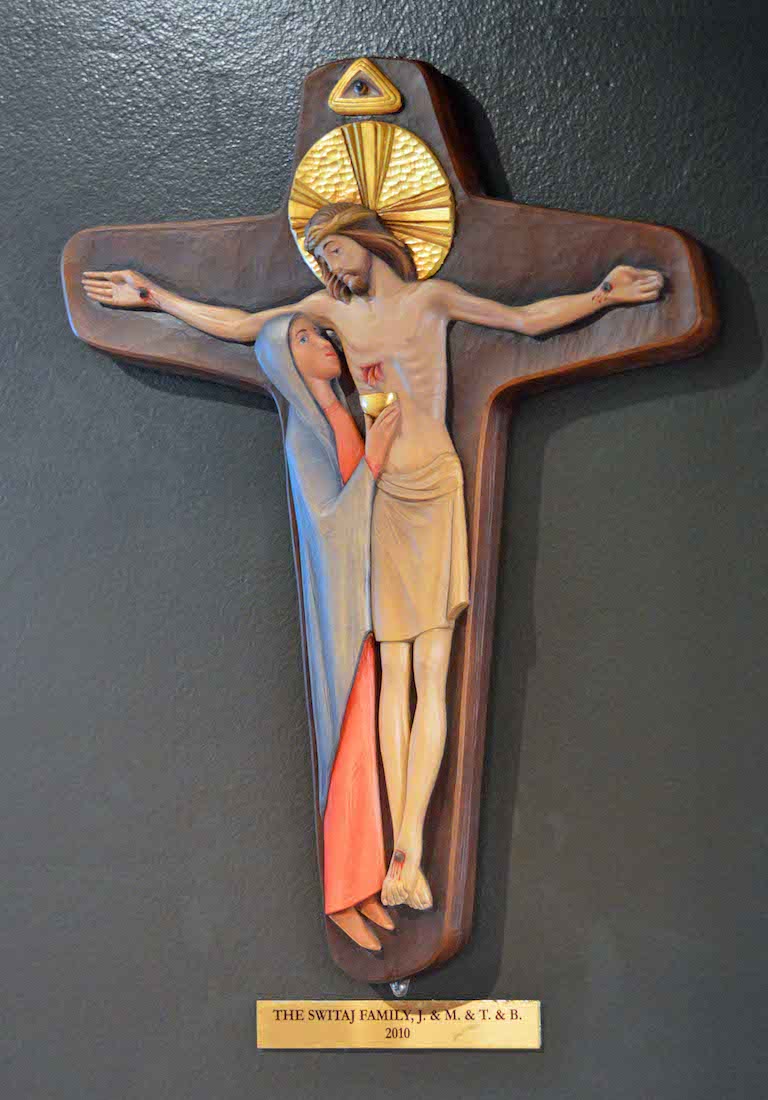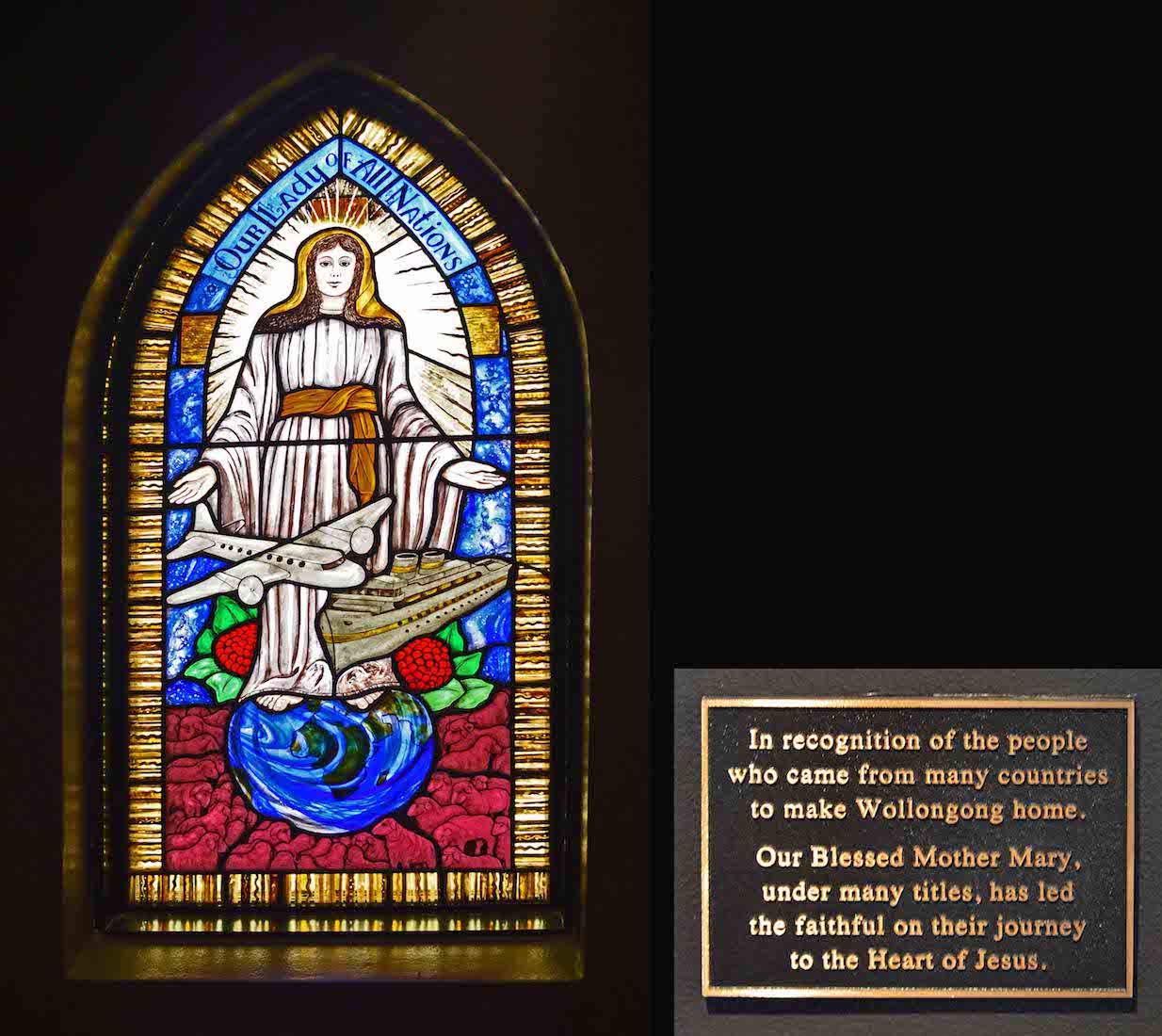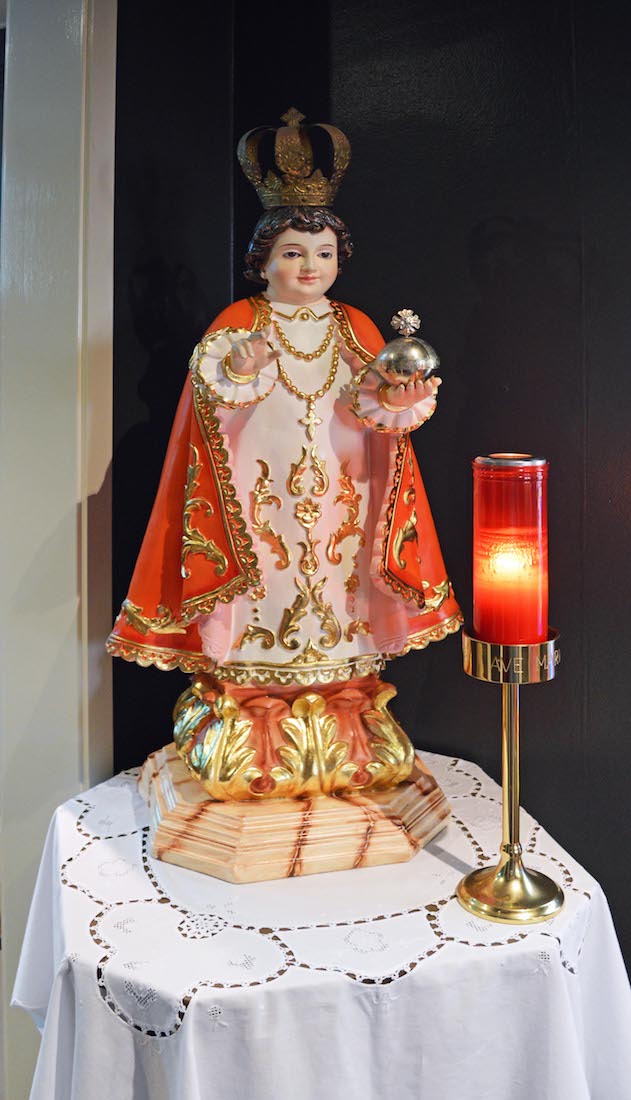22. PLAQUES
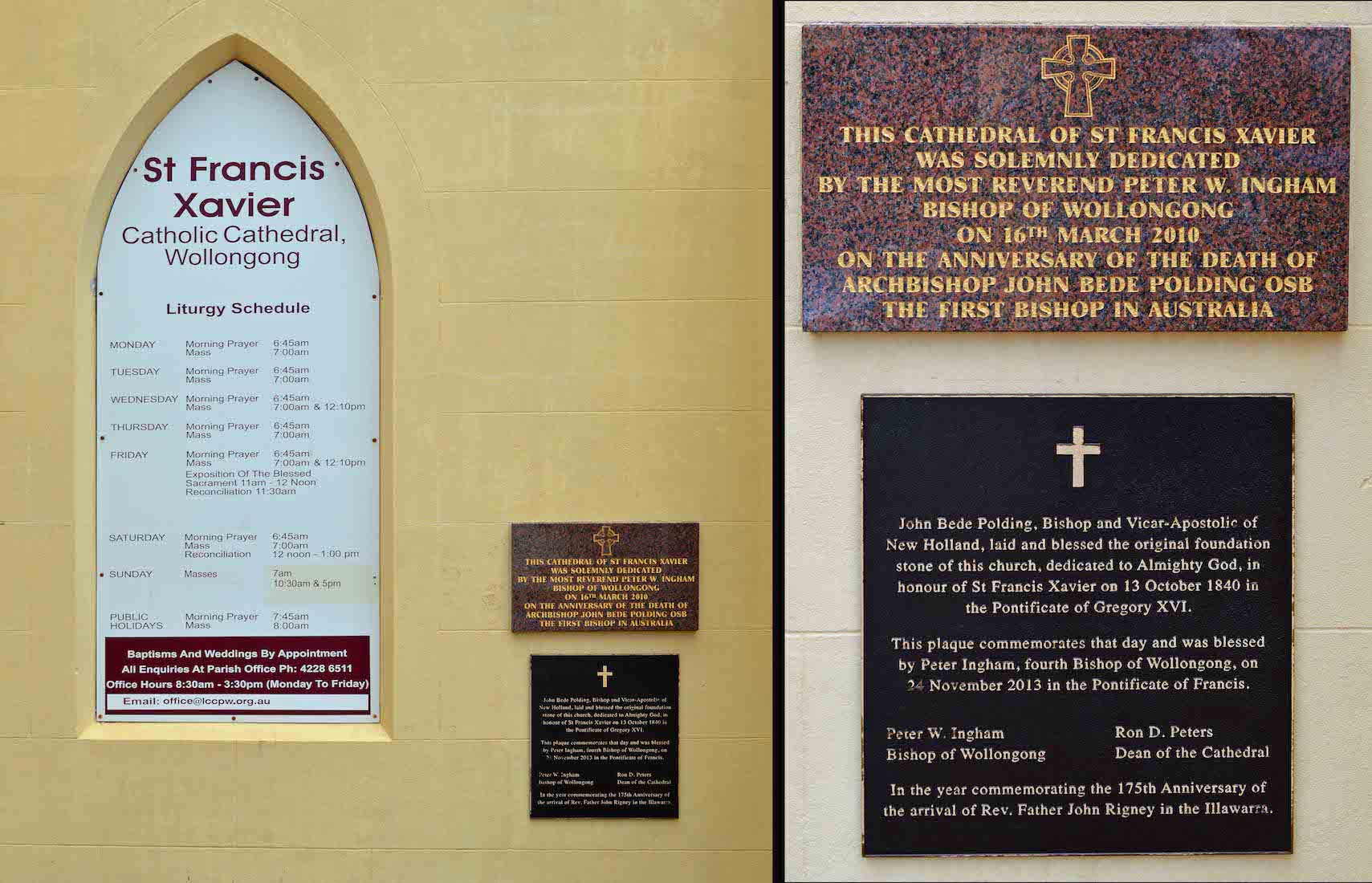
Near the entrance is a notice board and a couple of plaques. The top stone remembers the 2010 dedication, the plaque below recalls the blessing of the original foundation stone in 1840.
24. WINDOW AND PLAQUES
The first plaque, dated 1988, celebrates the Millenium of Christianity in the Ukraine. The window commemorates the Hungarian Freedom Fight of 1956. The plaques indicated the depth of involvement of Wollongong and its Catholic Cathedral with migrants from Europe and Asia.
25. ST FRANCIS XAVIER
St. Francis Xavier lived 1506–1552. He was born in Navarre, Spain in the Castle of Xavier. In 1525, he travelled to Paris and received Holy Orders in Venice in 1537. In 1540, Francis was sent to evangelize in India. He laboured in India, as well as in Ceylon, Malacca, Molucca islands, the island of Mindanao in the Philippines, and in Japan. He started a voyage to China in 1552 but died on Sanclan Island.
26. NORTH NARTHEX
The North narthex also contains a number of items of interest. We shall note the framed list at left, the window, the framed historic photographs at centre, and a mysterious object in the dark cabinet!
27. LIST AND WINDOW
The list details the priests of the Church from 1838, and the administrators from 1952. The window depicts a Polish Madonna and Child, and was donated by the Polish community.
28. HISTORIC PHOTOS
The photographs show the Church in the 1850s, the Church in 1908, the Church in the 1950s, Monsignor John Rigney 1838 – 1846 who established the Church in 1838, the Original Interior, and Father John Dunne 1914 – 1924 who was instrumental in the founding of a church at West Wollongong.
29. BROKEN TILE
Now here is an interesting item on display: a broken tile! But where did it come from?
31. NAVE
Standing at the back of the nave we gain our first impression of the worship space. No graceful Gothic arches here, but functional columns – the result of the 1933 extensions, when the original nave was widened. The high placing of the stations of the Cross is interesting.
32. CONQUERING MADONNA
In the Northwest corner of the nave is this imposing portrayal of Madonna and Child. It must be famous, but I can find no details. The crowns are very large and the figures sit atop a small sailing boat on a stormy sea.
33. NORTH NAVE
Looking along the North nave we see a number of figures to investigate.
34. ST JOSEPH
Between the confessional doors stands this figure of Joseph, identifiable by the sprig of lilies he carries. This relates to an old legend about the coming of the Messiah. In the adjacent frame is some interesting text about forgiveness.
35. CRUCIFIX AND CROSS
The cross is a symbol and central focus of the Christian faith. This may appear as a crucifix, with its emphasis on the death of Christ. Budded Celtic crosses adorn the ends of the pews.
36. NORTH ENTRY AND SACRED HEART
At the North East corner of the nave is this statue of the Sacred Heart. The door leads through to an exit door, and beyond to the Northern Chapel. Notice the mosaic of Mary meeting with Elizabeth before the birth of Christ. There is also a framed prayer just behind the statue, and an unusual crucifix on the wall just beyond the door.
38. CRUCIFIX WITH MARY
But immediately on our right is this unusual depiction of Christ on the Cross with Mary close by. This was given in 2010 by the Switaj family.
39. NORTH ENTRY WINDOW
The unusual window in this entry hall shows ‘Our Lady of All Nations’, and celebrates the diversity of people who came to live in Wollongong.
40. BOY KING
This statue is one of many based on the ‘Infant Jesus of Prague’. This is a 16th-century Roman Catholic wax-coated wooden statue of child Jesus holding an orb, located in the Carmelite Church of Our Lady Victorious in Malá Strana, Prague, Czech Republic. Pious legends state that the statue once belonged to Saint Teresa of Avila.


